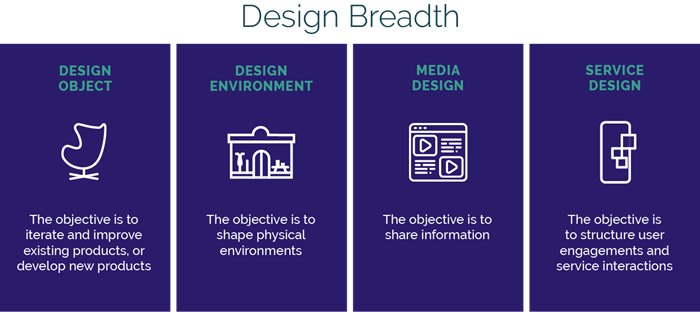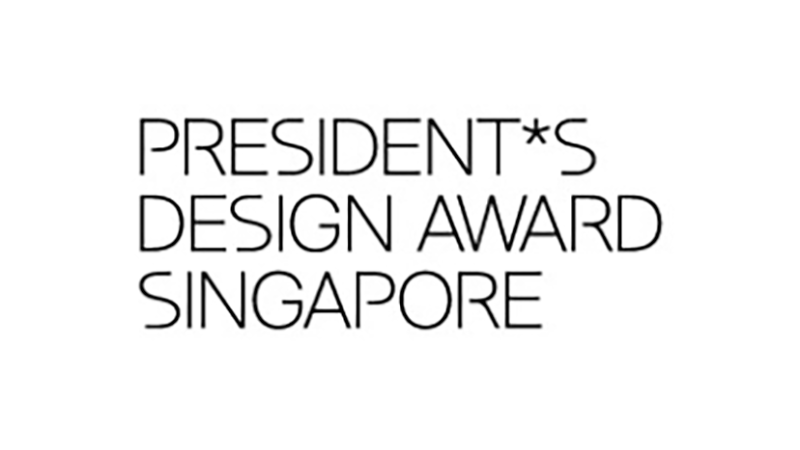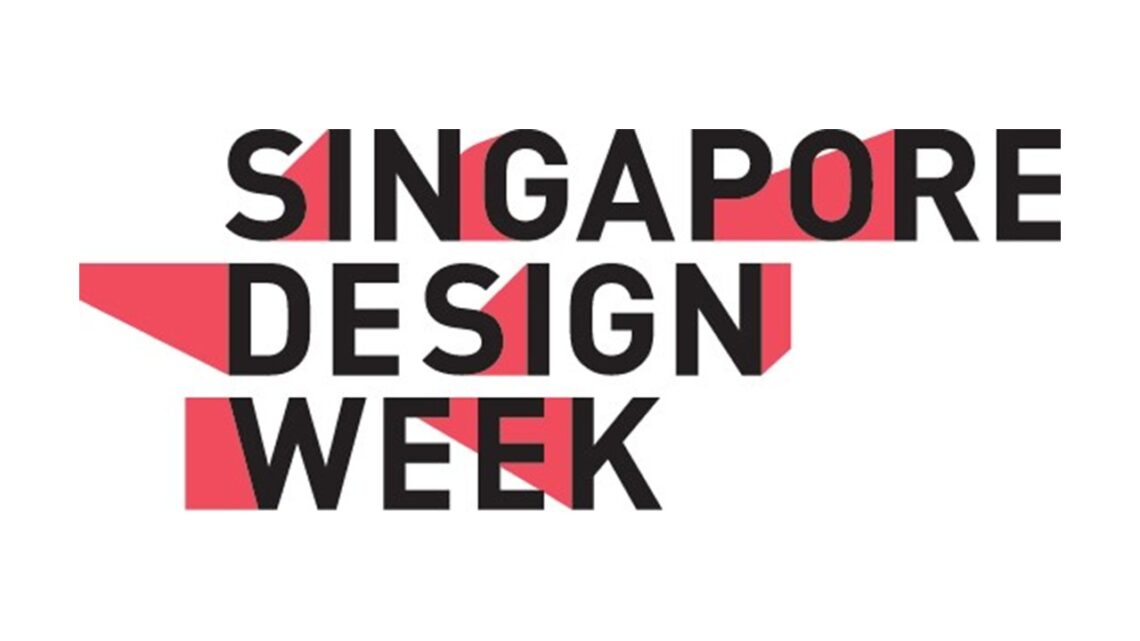In a longitudinal study commissioned by the DesignSingapore Council (Dsg), we discovered that companies which have continued to adopt design over time have seen better returns (in terms of profits) as compared to firms which remained stagnant or reduced their design adoption.
By: Lawrence Chong, Abhineet Kaul | February 2019
INTRODUCTION
Design is undoubtedly recognised as valuable today. Probably the most consequential company of our time that demonstrated the impact of design on business performance is Apple. In the process of writing this article, Apple remains by and large the world’s leading influence in design from products, user-experiences, and retail.
Inspired by the success of Apple, many companies in the last two decades have poured a massive amount of resources into the design to shape business performance. Many have adopted the mantra of design thinking, others have gone to great lengths to prove that they are a design-led firm. Microsoft, the one-time nemesis of Apple, whose founder Bill Gates was once criticised by Steve Jobs as being unimaginative, has in recent years won admiration from the creative industry as doing the right thing in design, sometimes even surpassing Apple.
While Design is undeniably essential in today’s operating environment, one overriding question still stands: what makes a company truly competitive when it comes to design? How would one know if the investments in the design are any good? Does winning many design awards equate to financial returns? Does hiring an army of designers help? How about having someone in the boardroom who champions design?
In the process of finding out how design drives business performance, we found that the existing measures of design value tend to be similar to how one would measure brand value which is close to the concept of goodwill.
This approach is not a very reliable measure of the impact of design. Unlike branding, design is not consequential but a continuous, strategic intervention which then results in high-financial returns by ensuring higher willingness to pay by consumers. So to look at it from a sum-of-all-things perspective is rather subjective.
We have also learnt in the conversations with various leaders in the industry from both practitioners and adopters is that people tend to be rather comfortable to associate design with art; which makes it unmeasurable. This is an incorrect premise as design has always existed as a solution-based discipline rather than as an expression.

OUR PREMISE
We realised that a closer benchmark on how to measure design’s impact might be to look at how innovation is adopted in an organisation and how that impacts financial performance. This would be more measurable because there are similar frameworks to measure the impact of innovation on business performance.
And in a way, design is a participant in the process of innovation too. We decided to verify this with the leaders in the industry both from the practitioners’ point of view and from the adopters. This then shaped our approach in search of the impact of design on business performance.
In 2015 and 2017, the DesignSingapore Council (Dsg) commissioned us at Frost & Sullivan and Consulus to conduct a longitudinal study to propose a way of determining the value arising from the use of design to companies in Singapore and the factors influencing success by surveying the same group of companies in both periods.
From our discussions with various stakeholders, we realised that the role that design plays in an organisation makes a difference.
If it is a one-sided approach, what we call “depth”, where there are Design specialists in the organisations, they are not in a position to shape the discourse or resources for design in the organisation. On the other hand, if an organisation is adopting design widely, what we term as “breadth”, but at a less strategic level, then it might not generate high value. The sweet spot of securing high impact from Design is when an organisation has the depth of thinking matched with the adoption of design as a process that is practised widely throughout the organisation.
DESIGN ADOPTION
In terms of depth of design adoption, we observed the following trends among the companies that we interviewed:
- Average spending on design by the businesses increased from 1.3% of revenue (in 2014) to 1.7% in 2016. In fact, even during economic slowdown, 72% of companies maintained their design budgets in 2016. We observed that an increasing number of companies consider spending on design as an essential activity for growth, rather than a discretionary spending that can be reduced to save costs;
- The number of companies with senior-level design champions increased from 12% in 2014 to 32% in 2016. 72% of these businesses say design champions have inputs in the entire design cycle and play a key part in company strategy;
- The number of in-house designers hired by companies increased by 21% between 2014 and 2016. The companies are also focusing on quality of designers. Companies that conducted no design training reduced from 87% in 2014 to 43% in 2016;
- From 12% of companies which believed that design plays a critical role in the strategy in 2014, the number has increased to 26% in 2016.
These observations indicate that there is a gradual trend towards maturity of design depth among companies in Singapore, as is visible between 2014 and 2016.
Similarly, we observed the following trends with regard to the breadth of design adoption among the companies that we interviewed:
- 59% of companies reduced the total number of design-related activities in 2016, as compared to 2014;
- On average, the companies reduced their design-related activities from nine in 2014 to seven activities in 2016;
- Media and Service related design activities tended to be continuous (i.e. conducted in both 2014 and 2016), while Product and Environment related activities seemed to be one-off (i.e. conducted in either 2014 or 2016);
- Companies with a senior design champions are conducting 2 to 3 more activities, as compared to companies without a senior design champion;
- Companies that were engaged in media and engagement related design in 2014 are more likely to engage in product-related design in 2016.
These indicate that breadth of design seems to have become more focused, with more companies moving towards advanced design activities (i.e. over time companies conduct fewer but higher impact activities as their design adoption matures).
DESIGN IMPACT
To understand the impact of design, we used the baseline data captured in 2014 to map the businesses we interviewed across the design adoption matrix – which comprises the depth and breadth indices – and we segmented the businesses in the three clusters formed based on the characteristics of their design adoption.
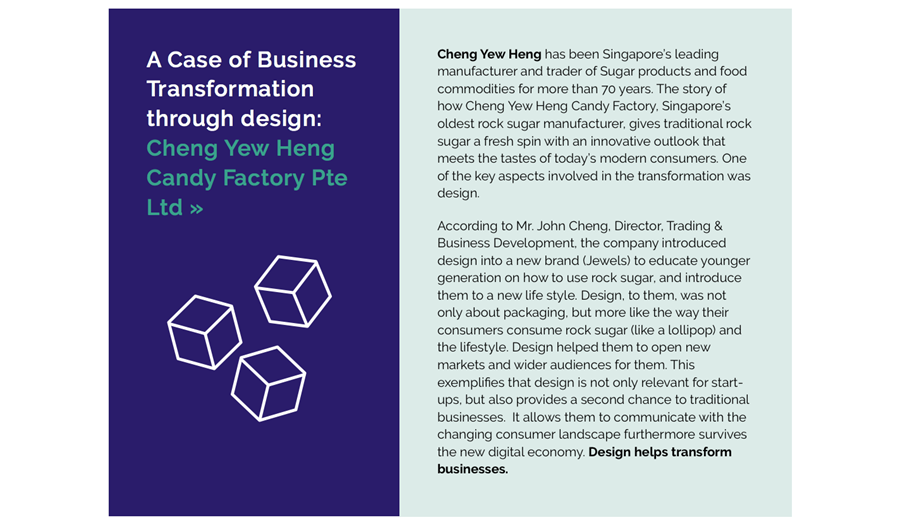

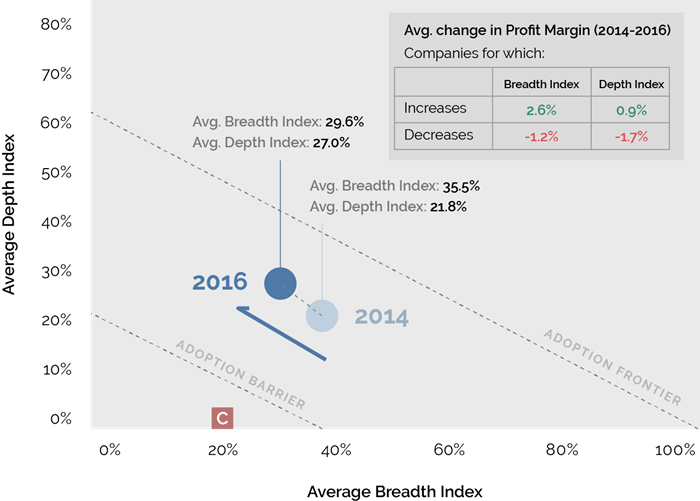
After mapping the businesses across the matrix, we observe that businesses have reduced the breadth (scope) and increased the depth (intensity) of their design adoption from 2014 to 2016. However, increase in both Breadth Index, and Depth Index (measured with regards to 2014 baseline) were associated with higher profits.
While the design strategy is a key driver for companies to cross across the Adoption Barrier, the presence of a senior design champion is critical to cross the Adoption Frontier. The exhibit below indicates the key elements needed by a company that is moving across the Adoption Barrier and Adoption Frontier – e.g. a company moving across Adoption Frontier has increased their emphasis on product design, while at the same time have included design as a key strategy lever and provided more responsibilities to a senior-level design champion.

We also observed that the businesses which continued investment in design had 2x higher returns as compared to companies which reduced design investments to save costs.
And finally, we observe that companies moving across the Adoption Frontier were also turning in higher returns.
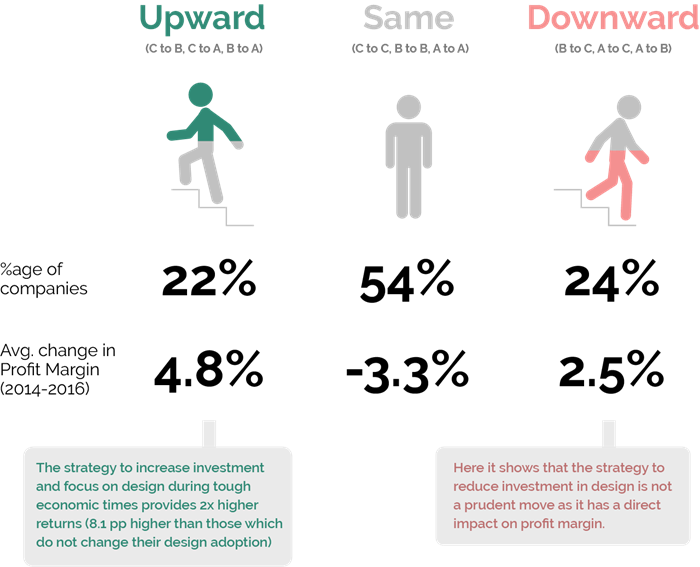
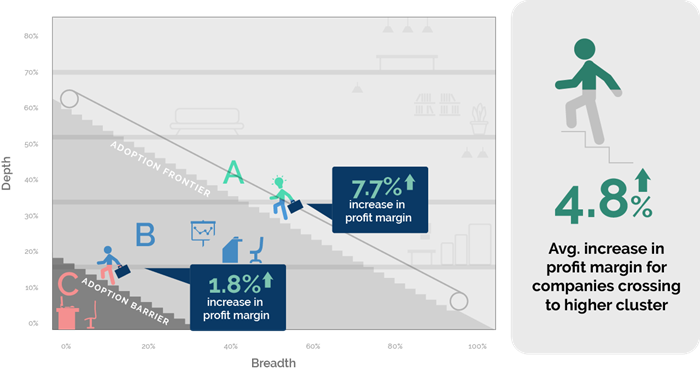

CONCLUSION
The study showed that continued adoption of design could provide higher returns – companies which continued to adopt design also saw better returns (in terms of profits) as compared to firms which remained stagnant or reduced their design adoption. However, a limitation of the study is that overall business performance cannot be just attributed to the use of design. In addition, we noted that:
- Companies tend to invest in breadth first, before committing to depth. Companies with high BI in their clusters were more likely to move into the higher cluster;
- Presence of the following are drivers for crossing the ‘Adoption Frontier;
- senior design champion,
- importance of design in strategy, and
- undertaking more advanced design activities
“Singapore has always believed that design can help companies respond to new challenges and win the marketplace. This study shows clearly that companies that persisted in their investment in design – even during an economic slowdown – resulted in higher returns, as compared to those that reduced their investments to save costs. We hope this gives design champions the added confidence to continue design adoption, no matter the challenges. We also hope this will encourage CEOs to cross the “adoption frontier” by appointing senior design champions, and tapping design as a strategy to make radical change to their businesses,” said Dsg’s Executive Director Mark Wee.
ABOUT THE AUTHORS
Abhineet Kaul heads the Consulting for Public Sector and Government Practice at Frost & Sullivan, Singapore.
Frost & Sullivan, a business consulting company, enables clients to accelerate growth and achieve best in class positions in growth, innovation and leadership. The company’s Growth Partnership Service provides the CEO and the CEO’s Growth Team with disciplined research and best practice models to drive the generation, evaluation and implementation of powerful growth strategies
Lawrence Chong is the CEO at Consulus.
A global innovation firm that has implemented a transdisciplinary business design method comprising of business, organisation and design to shape competitive advantage of hundreds of companies globally since 2004. He served as the President of Design Business Chamber Singapore from 2009 – 2013.
The authors would like to thank Design Singapore Council, Frost & Sullivan’s Richard Wong, Mia Zhang, Deepu Nair, and Consulus’ Steven Tan, Florence Oh for their contribution to the research.
About DesignSingapore Council
DesignSingapore Council was established in 2003 to help develop the nation’s design sector. The vision of the DesignSingapore Council is for Singapore to be an innovation-driven economy and a loveable city through design by 2025. As the national agency for design, the Council’s mission is to develop the design sector, help Singapore use design for innovation and growth, and make life better in this UNESCO Creative City of Design.
Appendix: Frequently Asked Questions
What was the approach to develop the framework?
The framework to measure design adoption was developed in consultation with DesignSingapore Council, experts at Consulus, Frost & Sullivan, SMU and economists at Ministry of Trade & Industry (MTI), Singapore.

How do we define the Depth of Design Adoption?
To further define design depth, we identified what it meant to have design champions internally and whether they have the power to shape strategy and resources.
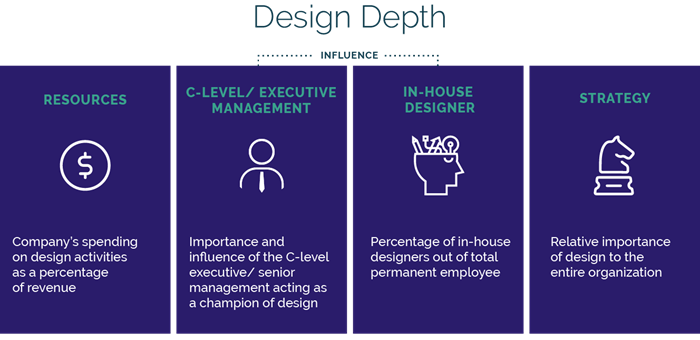
How do we define the Breadth of Design Adoption?
To further define design breath we identified the entire process from ideation to the user-experience, how widely is design applied throughout the process and at what levels. These activities, typically, vary across the sector but are consistent across organisations within the sectors.
